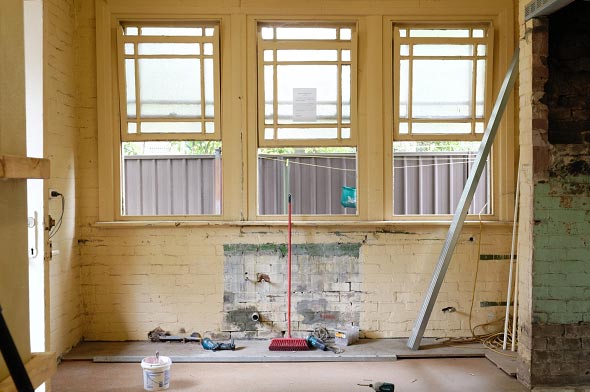Do's & Don'ts of Water Restoration.
Do's & Don'ts of Water Restoration.
Blog Article
We've discovered this post about 5 Home Safety Tips To Reduce The Risk Of Fire And Water Damage listed below on the net and decided it made good sense to discuss it with you on this site.

Water offers life, water invasion on parts where it's not meant to be can result in damage. Residences with water damages smell old as well as moldy.
Water can come from several resources such as tropical storms, floodings, burst pipes, leakages, and sewer concerns. In case you experience water damage, it would be good to understand some security precautions. Below are a few standards on exactly how to deal with water damages.
Do Prioritize Home Insurance Policy Insurance Coverage
Water damage from flooding dues to hefty winds is seasonal. You can likewise experience an abrupt flood when a damaged pipeline unexpectedly ruptures right into your home. It would certainly be best to have home insurance policy that covers both disasters such as all-natural disasters, and emergencies like damaged plumbing.
Don't Neglect to Turn Off Energies
This reduces off power to your whole residence, preventing electrical shocks when water comes in as it is a conductor. Don't neglect to turn off the primary water line shutoff.
Do Stay Proactive as well as Heed Weather Signals
Storm floods can be very uncertain. Stay positive as well as ready if there is a background of flooding in your neighborhood. Listen to discharge warnings if you live near a river, lake, or creek . Take out belongings from the very beginning and basement, then placed them on the greatest feasible degree. Doing so decreases possible residential property damages.
Do Not Disregard the Roofing System
You can prevent rainfall damages if there are no openings and leaks in your roofing. This will certainly prevent water from moving down your wall surfaces and saturating your ceiling.
Do Take Note Of Tiny Leakages
A burst pipe doesn't happen overnight. You might observe bubbling paint, peeling off wallpaper, water streaks, water stains, or dripping noises behind the wall surfaces. Have your plumbing repaired prior to it results in substantial damages.
Don't Panic in Case of a Burst Pipeline
Keeping your clearheadedness is important in a time of dilemma. Due to the fact that it will certainly stifle you from acting quick, worrying will only worsen the issue. When it comes to water damage, timing is vital. The longer you wait, the even more damages you can anticipate. Thus, if a pipeline bursts in your house, right away shut off your main water valve to cut off the source. Unplug all electric outlets in the area or transform off the circuit breaker for that component of the residence. Call a credible water damages repair expert for assistance.
Water offers life, water breach on components where it's not expected to be can result in damage. Homes with water damage odor musty as well as old.
Water damage from flooding fees to hefty winds is seasonal. You might observe gurgling paint, peeling off wallpaper, water streaks, water spots, or trickling audios behind the wall surfaces. When it comes to water damage, timing is key.
Some Do's & Don't When Dealing with a Water Damage
DO:
Make sure the water source has been eliminated. Contact a plumber if needed. Turn off circuit breakers supplying electricity to wet areas and unplug any electronics that are on wet carpet or surfaces Remove small furniture items Remove as much excess water as possible by mopping or blotting; Use WHITE towels to blot wet carpeting Wipe water from wooden furniture after removing anything on it Remove and prop up wet upholstery cushions for even drying (check for any bleeding) Pin up curtains or furniture skirts if needed Place aluminum foil, saucers or wood blocks between furniture legs and wet carpet Turn on air conditioning for maximum drying in winter and open windows in the summer Open any drawers and cabinets affected for complete drying but do not force them open Remove any valuable art objects or paintings to a safe, dry place Open any suitcases or luggage that may have been affected to dry, preferably in sunlight Hang any fur or leather goods to dry at room temperature Punch small holes in sagging ceilings to relieve trapped water (don't forget to place pans beneath!); however, if the ceiling is sagging extremely low, stay out of the room and we'll take care of it DO NOT:
Leave wet fabrics in place; dry them as soon as possible Leave books, magazines or any other colored items on wet carpets or floor Use your household vacuum to remove water Use TV's or other electronics/appliances while standing on wet carpets or floors; especially not on wet concrete floors Turn on ceiling fixtures if the ceiling is wet Turn your heat up, unless instructed otherwise

Do you like more info about 5 Home Safety Tips To Reduce The Risk Of Fire And Water Damage? Put a remark further down. We will be delighted to hear your suggestions about this blog entry. We hope to see you back again later on. Remember to take the time to promote this blog posting if you enjoyed it. Many thanks for your time. Visit us again soon.
Report this page